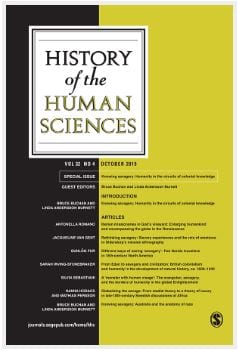
History of the Human Sciences, Ahead of Print.
The Caraka Saṃhitā (ca. first century BCE–third century CE), the first classical Indian medical compendium, covers a wide variety of pharmacological and therapeutic treatment, while also sketching out a philosophical anthropology of the human subject who is the patient of the physicians for whom this text was composed. In this article, I outline some of the relevant aspects of this anthropology – in particular, its understanding of ‘mind’ and other elements that constitute the subject – before exploring two ways in which it approaches ‘psychiatric’ disorder: one as ‘mental illness’ (mānasa-roga), the other as ‘madness’ (unmāda). I focus on two aspects of this approach. One concerns the moral relationship between the virtuous and the well life, or the moral and the medical dimensions of a patient’s subjectivity. The other is about the phenomenological relationship between the patient and the ecology within which the patient’s disturbance occurs. The aetiology of and responses to such disturbances helps us think more carefully about the very contours of subjectivity, about who we are and how we should understand ourselves. I locate this interpretation within a larger programme on the interpretation of the whole human being, which I have elsewhere called ‘ecological phenomenology’.